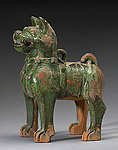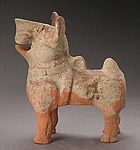HAN DYNASTY STANDING GREY POTTERY DOG
China, 206 B.C. - 220 A.D.
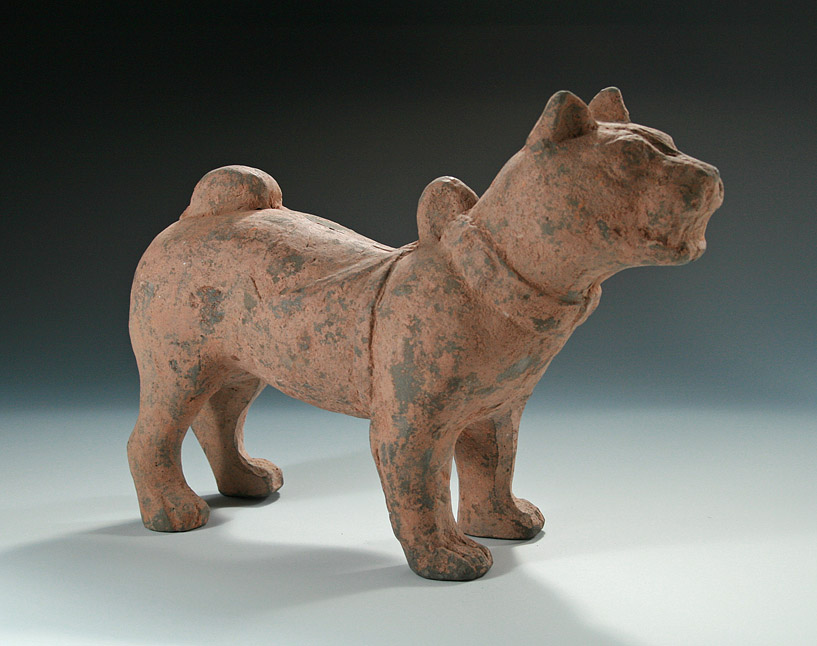
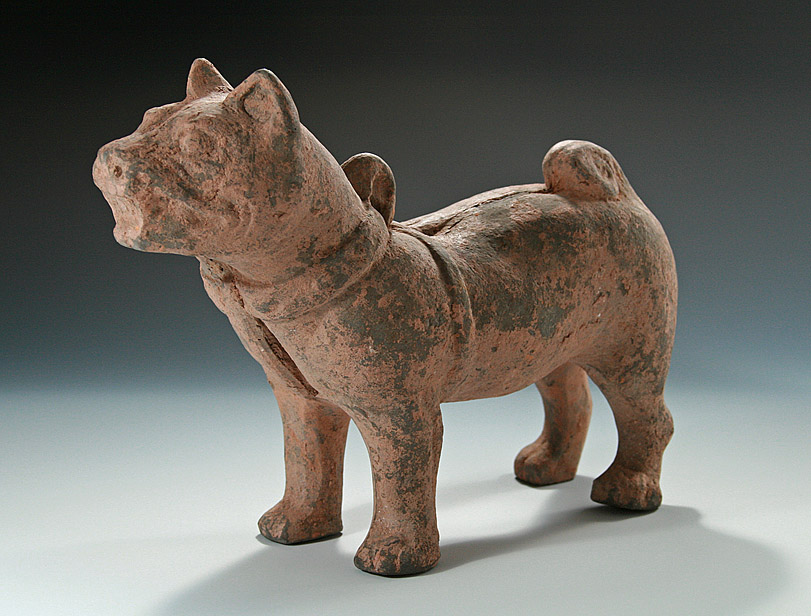
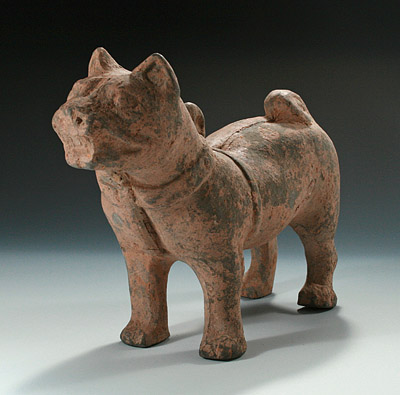
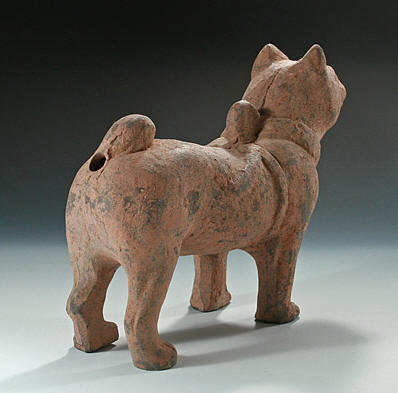
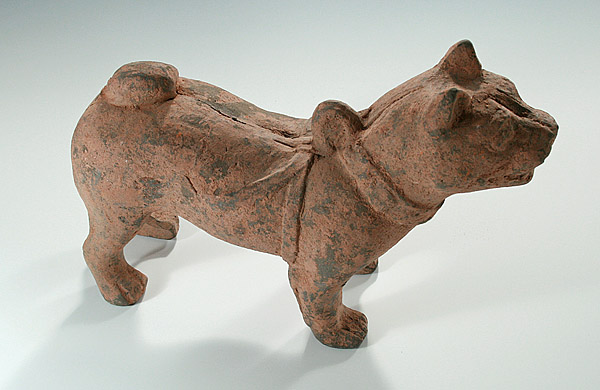
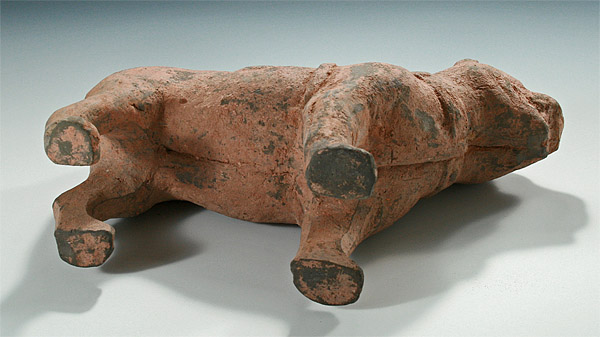
The gray-green clay dog standing four-square with ears erect and curled tail, wearing a harness,
some original red-brown slip remaining, with flecks of remaining white slip
Condition:
Excellent for age; expected wear, with some slip on the
glaze is still remaining;
the ears and
some parts of the face have some tiny
repaired flaws
Each year on March 3, at an ancient temple in the Tongbai Mountains in Southeast China, local residents hold a grand
ceremony honoring Pangu – the mythological dog-headed figure, whom legends say emerged from a giant cosmic egg,
creating heaven and earth. As the legends were passed down orally, many versions exist. Perhaps the most lyrical holds
that when Pangu died, his breath became the wind and clouds, his voice the rolling thunder, one eye the sun, the other the
moon. One legend describes his tears flowing to make rivers and the radiance of his eyes turning into thunder and lightning;
when he was happy the sun shone, when angry black clouds gathered in the sky. This dog-headed kindly being was thought
the father of the human race, and thence the emperors.
The earthenware artifacts and bricks from one of these temples date to the Han Dynasty (206 B.C. – 220 A.D.), and through
the Qing Dynasty (1644-1911) – confirming that the worship of Pangu is more ancient than the pre-Qin period (221 – 206 B.C.).
Honor for dogs has continually reigned throughout Chinese history - symbols of bonding, trust and loyalty. They have served
as hunters for food, palace guards (where they were the secret affair of the eunuchs) and given as gifts to the emperors – the
custom of a gift remaining into modern times. When the first pictograph writing emerged in the Shang Dynasty (1766-1122 B.C.),
there was mention of a dog-officer. Early in China’s history, dogs were buried along with their masters and mistresses to guide
them into afterlife. Life-like terracotta figures replaced live sacrifices in the Han period, as this example in harness.
During the mid-20th century, there was a ban on dogs, due to the cost and use of food. This ban was lifted in the 1980’s.
The Chinese people finally regained the privilege of owning and honoring their dogs. Although numbers and sizes can be
limited, the bond between dog and man has never been lessened.
8.5" High x 11.5" Long
SOLD
#5922
For Related Han Pottery Dogs, Please Click Below:
For a short excerpt from the rich award winning film
"Of Dogs & Gods - A Social History of the Dog in China"
by Chris Carroll, Gulliver Media Australia Pty Ltd,
Click below:
Of Dogs & Gods
The long version "Of Dogs & Gods" was selected in official competition to be included at the
Guangzhou International Documentary Film Festival, China, 2007.
We welcome and encourage all inquiries. We will make every attempt to answer any questions you might have.
For information, call (901) 761-1163 or (901) 827-4668 or email mfcreech@bellsouth.net
American Express, Mastercard, Visa and Discover accepted
|
Accessories Ceramics Early Asian Ceramics Fine Art Furniture Glassware Silver Home
|
